It was my curiosity to watch birds, and flowers closer or rather wanting to be closer to them, I started to zoom them in with my camera. Slowly I started clicking pictures of birds, flowers, trees, and animals around me as a way to savor those milliseconds of time later and to get to know them more closely. Fortunately, near the place where I’m staying, there stands an African Tulip tree, tall and strong. Its welcoming hands reached up to my terrace and prepared a spot for me to watch it more closely. I see its flowers blooming and shedding, its visitors: Squirrels, Barbets, Parakeets, Mynah, Koel, Sunbirds, Ants and Flies having their ‘snack times and ‘juice times’; chanting their melodious music as if paying tribute to the mighty Tulip tree. Here I share my
observations of the African tulip in three parts:
1. Life in Loop
In life, I came across many sayings like “Everything has its own time”, “All flowers don’t bloom together”, and “When one ends, another begins”. The life my African Tulip tree was living is a testament to the above saying. I was able to closely observe and document the growth of its two flowers that were growing closely but in their different phases of life: when one was blooming the other was shedding and vice versa. There was a time when both of them had the same number of petals ( one in a stage of shedding the petals and in the other, the petals were showing up). It was as if they were having a conversation together.
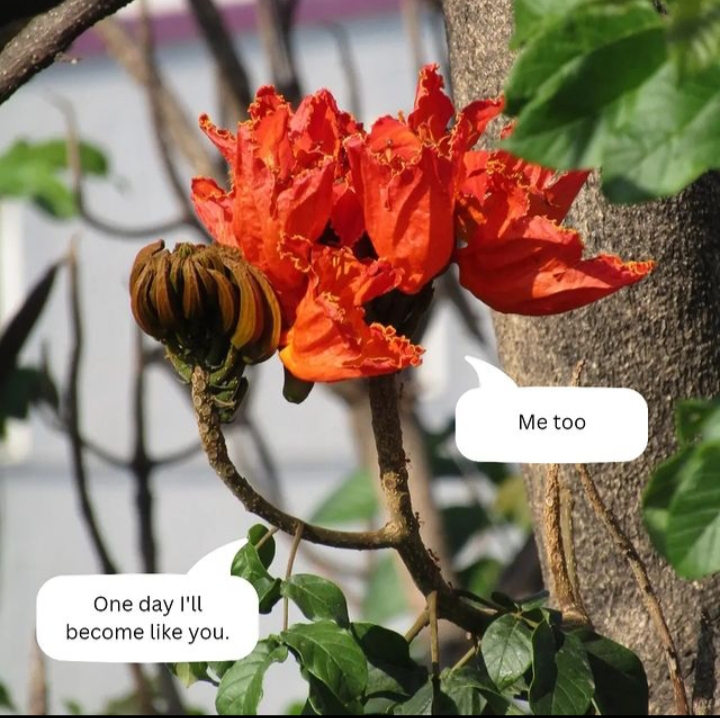
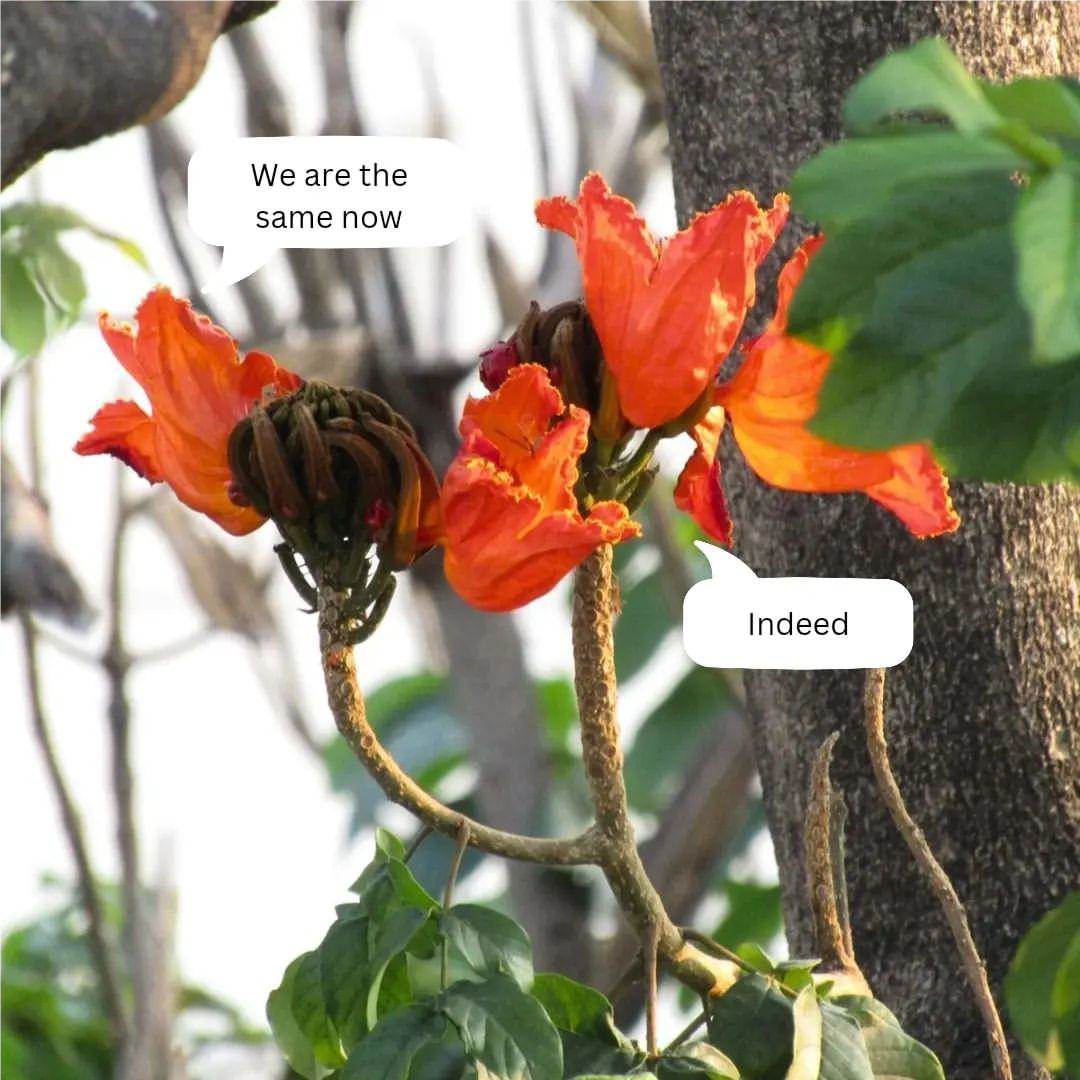
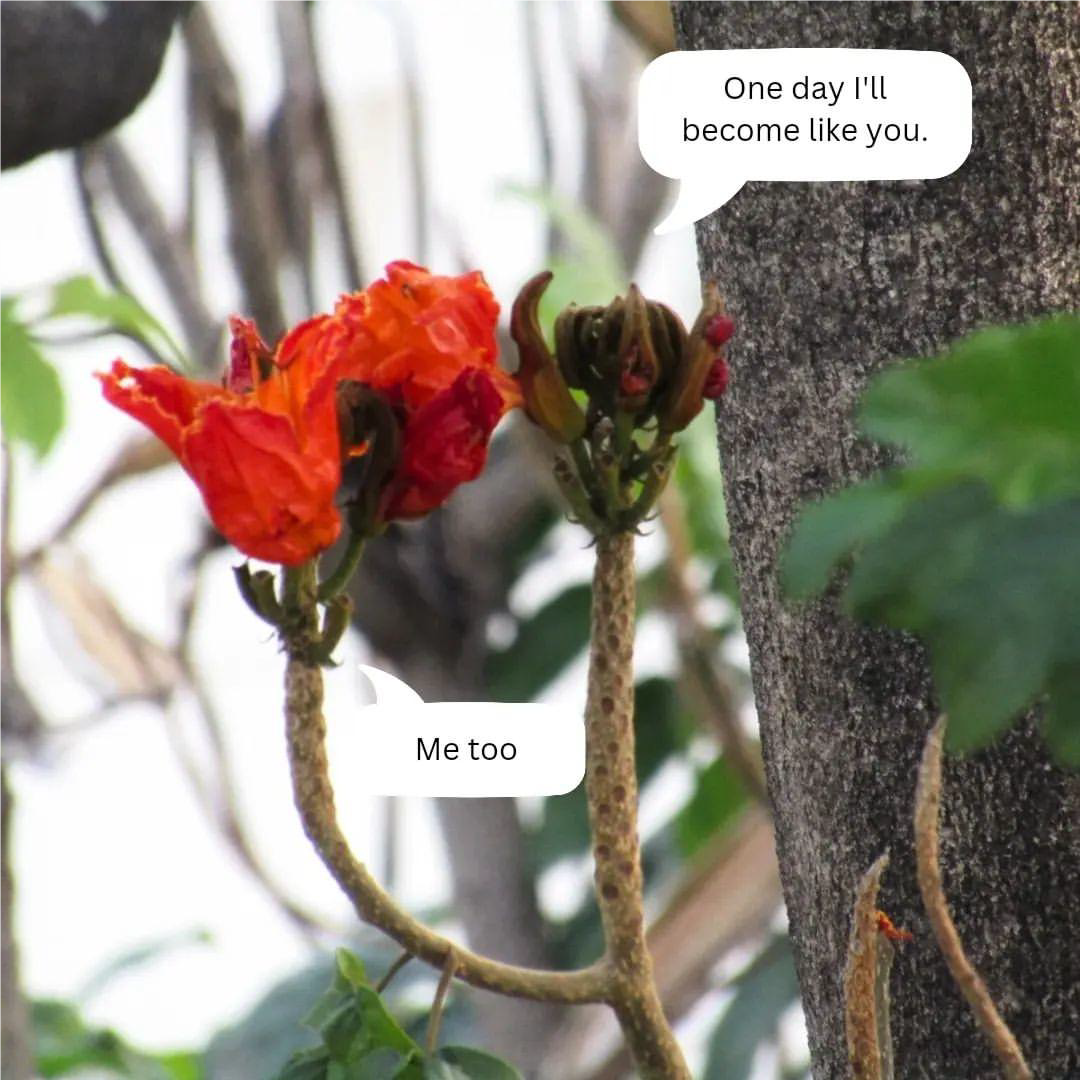
2. The Bloom
One of the exciting things while closely watching the African Tulip Tree is waiting to see its flowers blooming. I was able to document the same bud’s blooming phases on different days. In my observations, its brown buds have layers that are arranged in a sphere-like manner and each bud uncovers into a petal which is cup-like in shape. The flower is reddish-orange in colour, and when sunlight falls on it, it looks like a flame of fire. It took around two weeks for the flower to bloom petal by petal. Observing its bloom was like watching a dance, where the dancer showcased different mudras with the fingers gracefully. This unique way of blooming is a marvel to my sight. As an observer and waiting each day to see its blooming, nature taught me the beauty of waiting and the slowness of life.
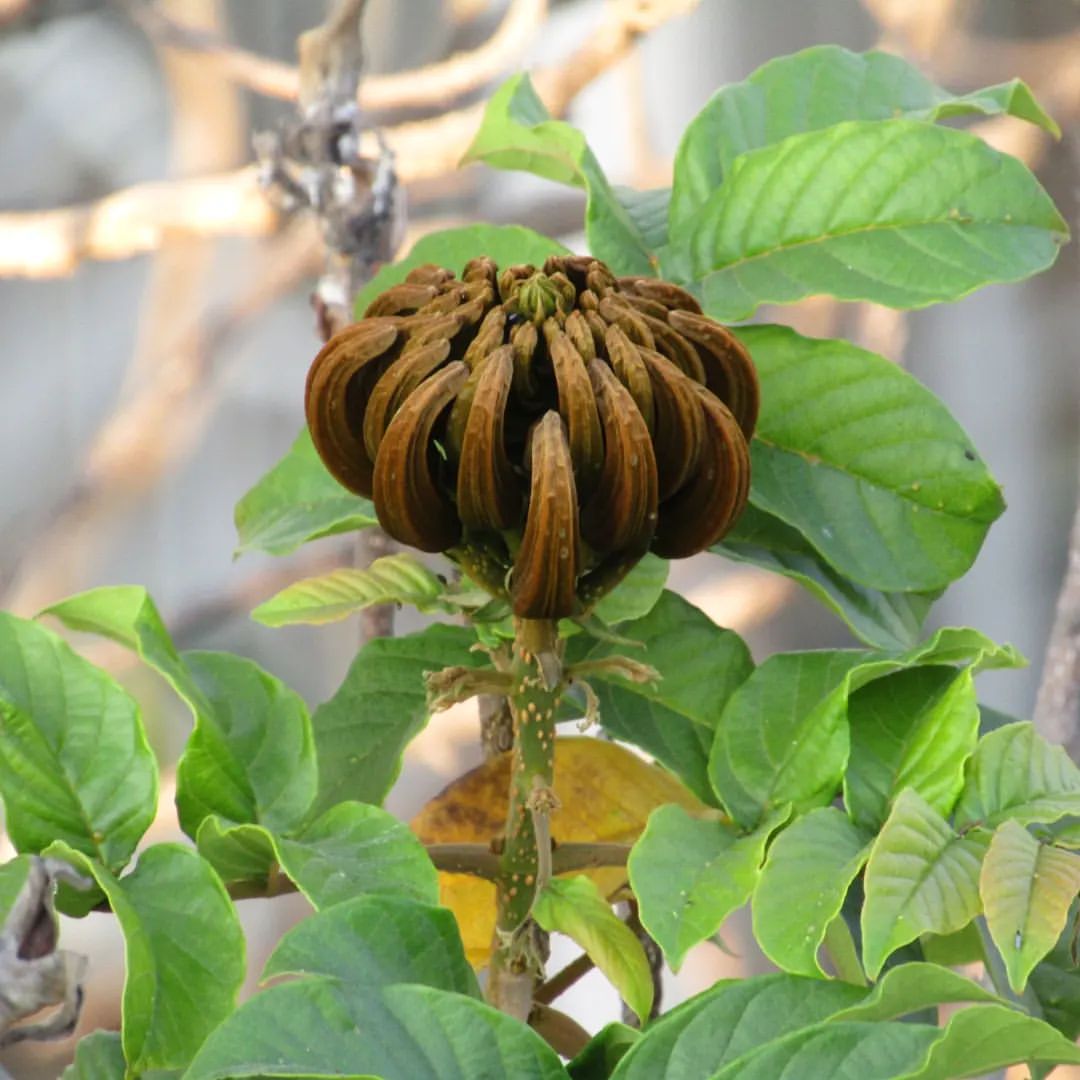
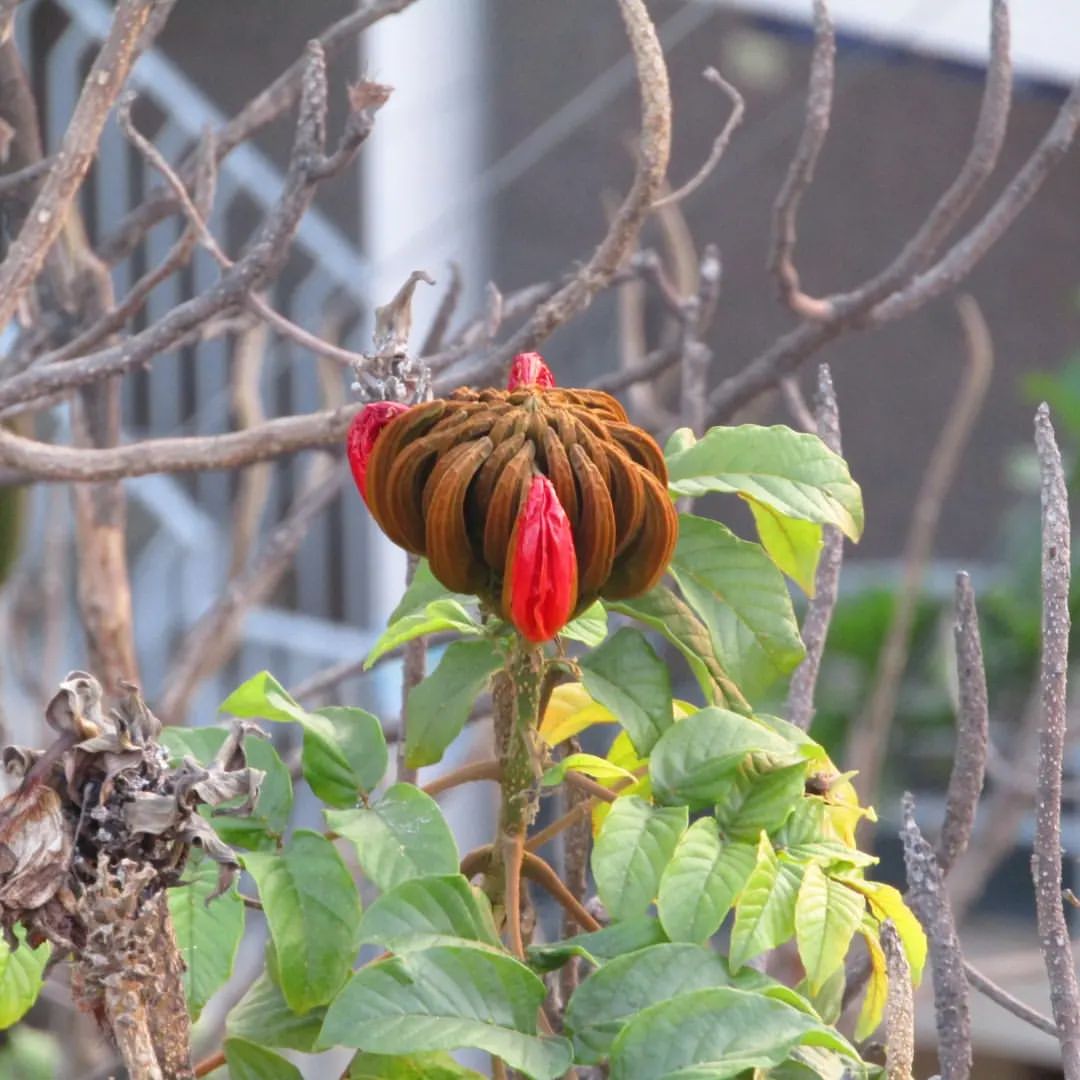
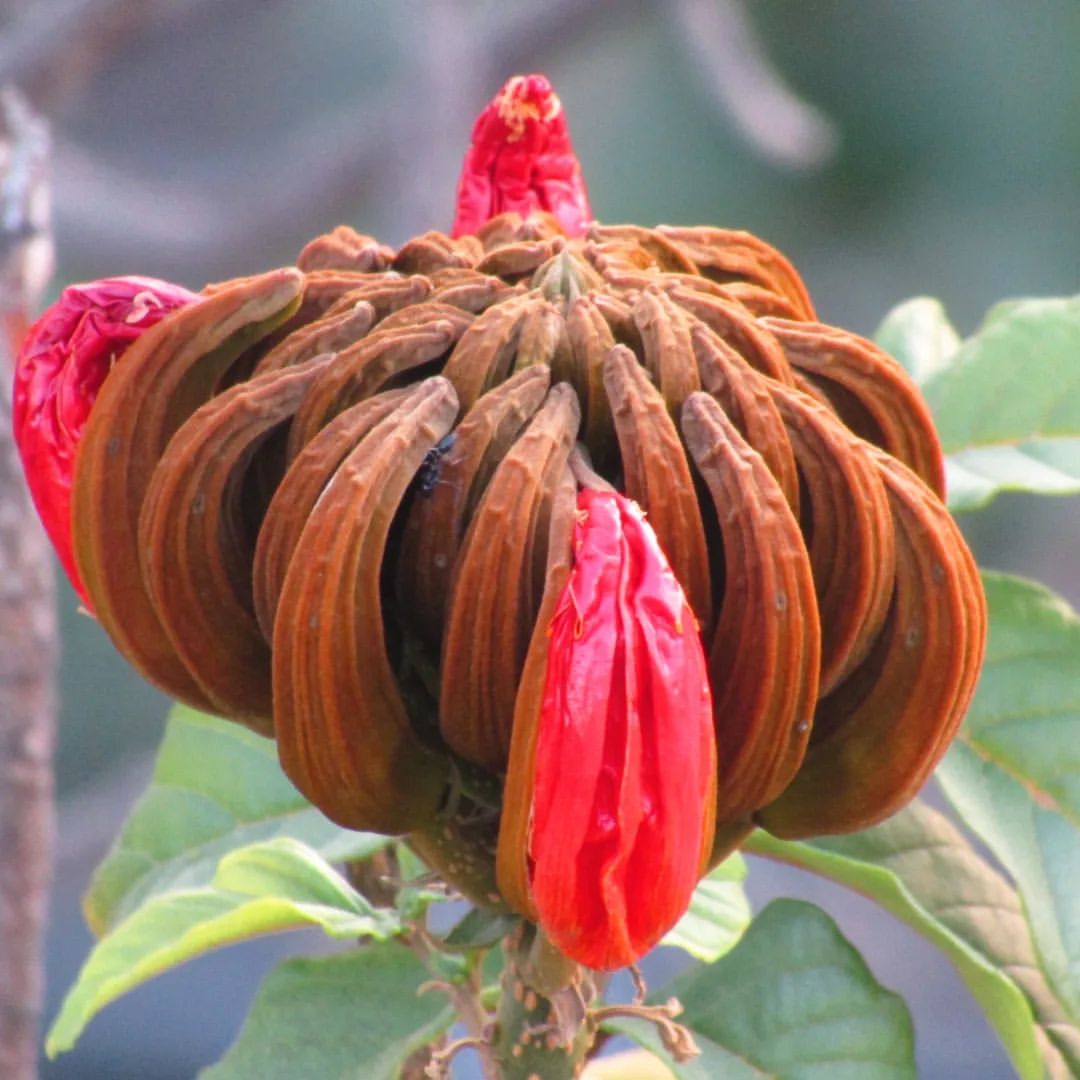
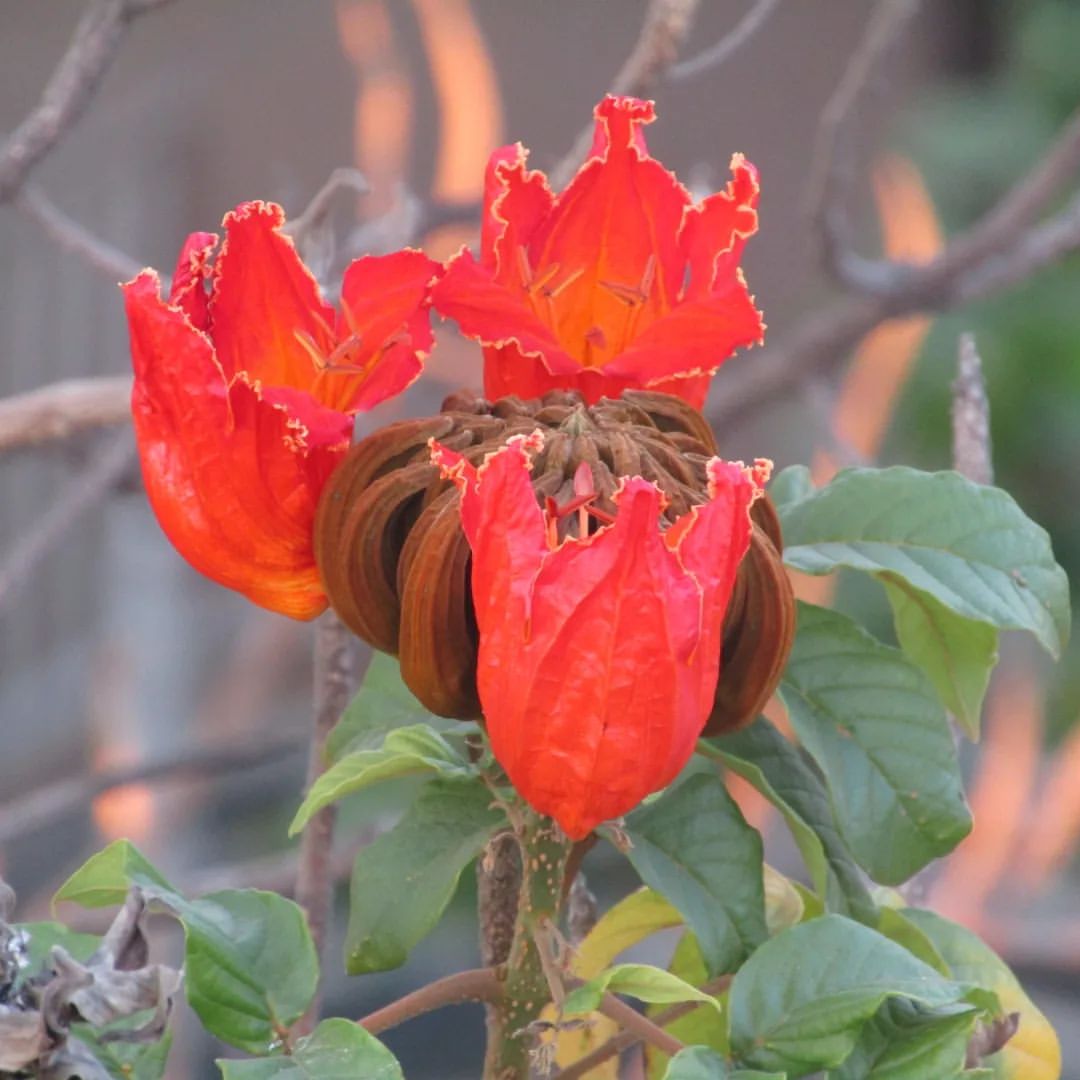


3. The frequent Visitor: African Tulip Tree has a lot of visitors. One of the most frequent and long-time-staying visitors is squirrels. It is a much delightful sight to see squirrels spending time with the tree with its little adventures, snack times, “inviting partner” performances and rest times. Two of the most marvelous sights I like to spend time watching are its snack time with the African Tulip Tree’s fruit/pod and its flowers. Squirrel has a very interesting pose when eating fruit filled with seed pods. I prefer to name the whole process as “position-tear-grab-hang down-munch-come up (repeat)”. When it comes to the flower, the squirrel first does a quick “is-juice-ready?” checking from the nearby branch. It then occupies its seat at the centre of the flower bud holds the cup-like petals with its small fingers and keeps its head inside the cup-like petal as if it is drinking a tulip juice from a big jar. It repeats this in all petals by keeping its centre position. It’s a little tricky though to get squirrel’s cute movements as they are fast movers but I’ve succeeded in capturing a few of them.
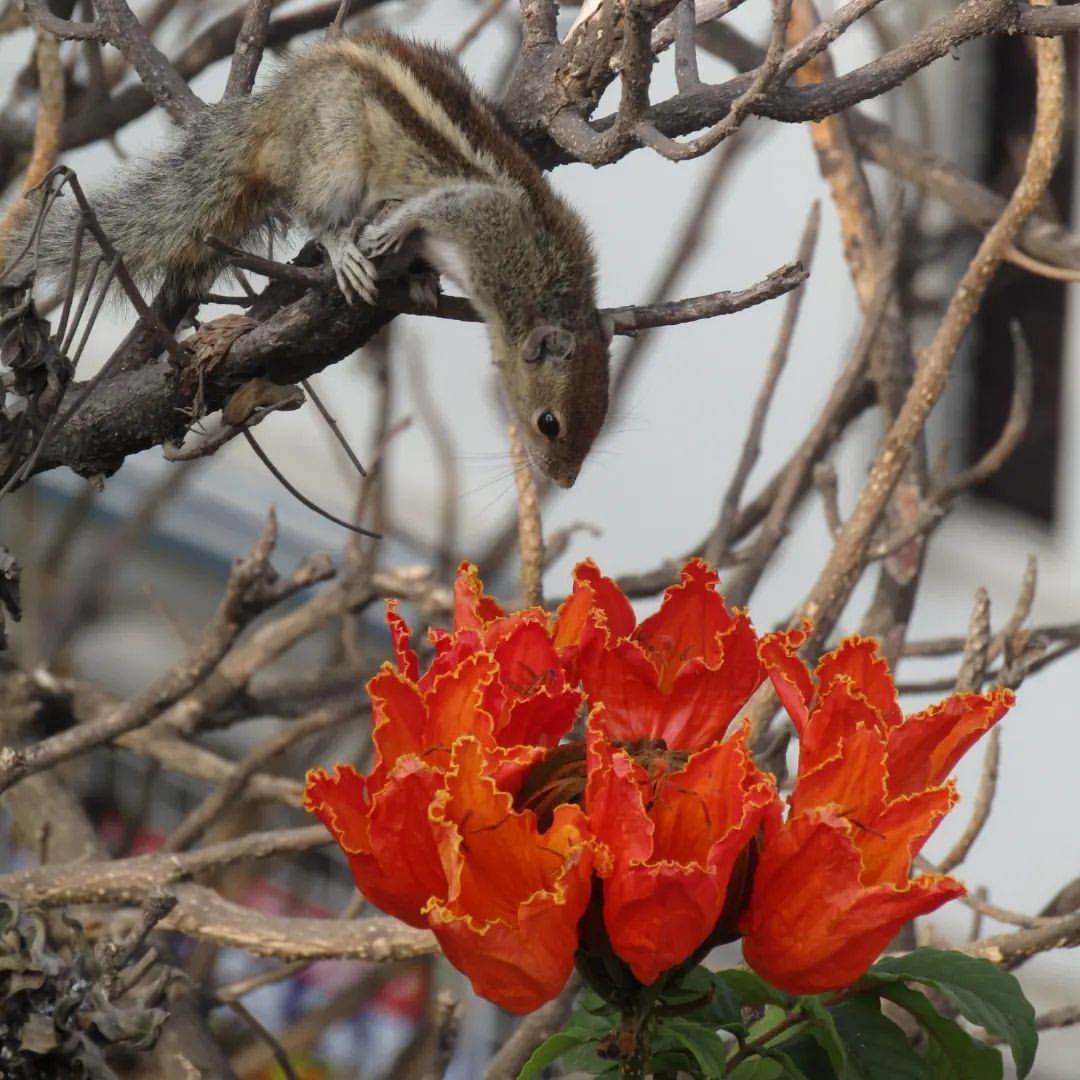
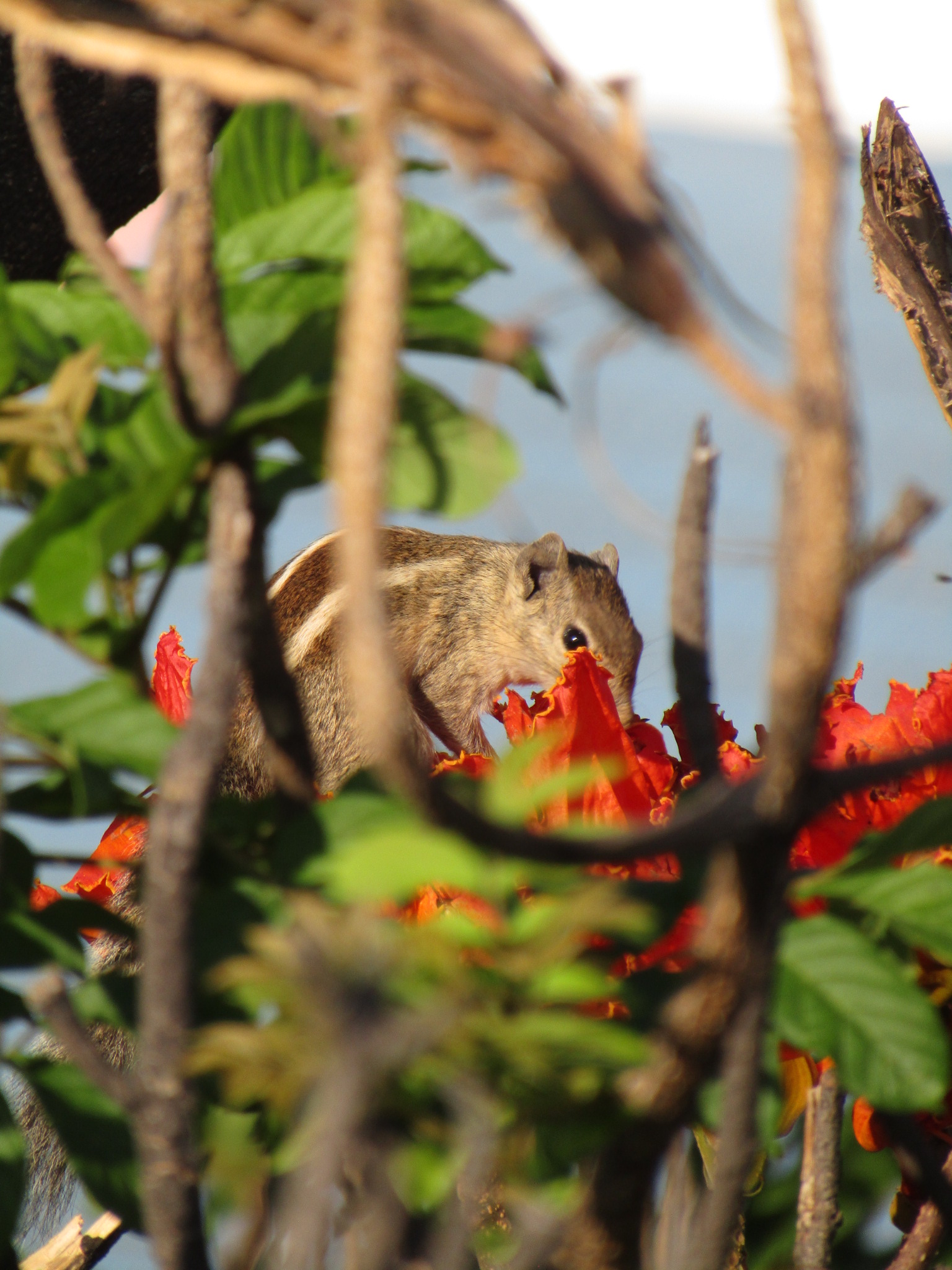
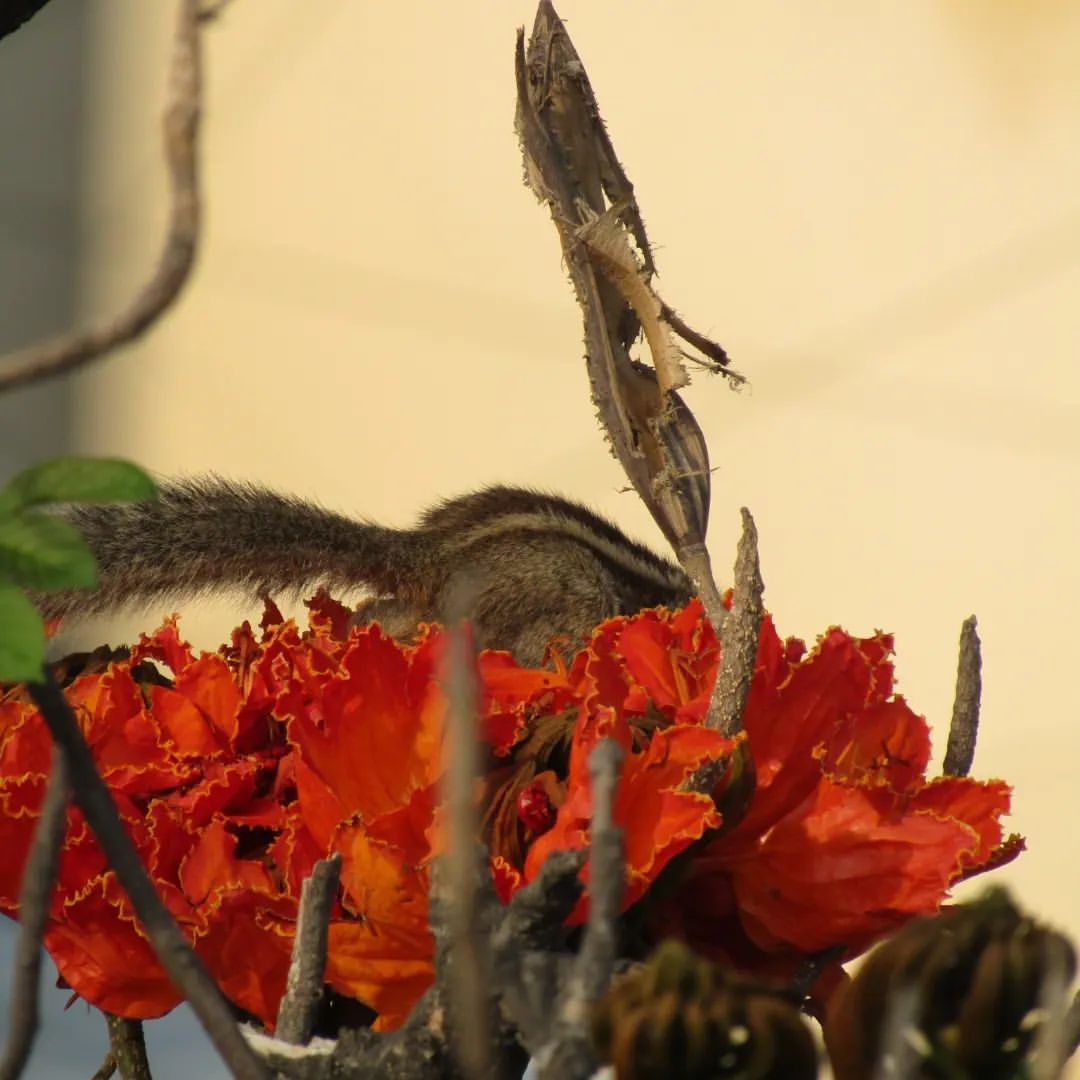
Squirrel with African Tulip flower
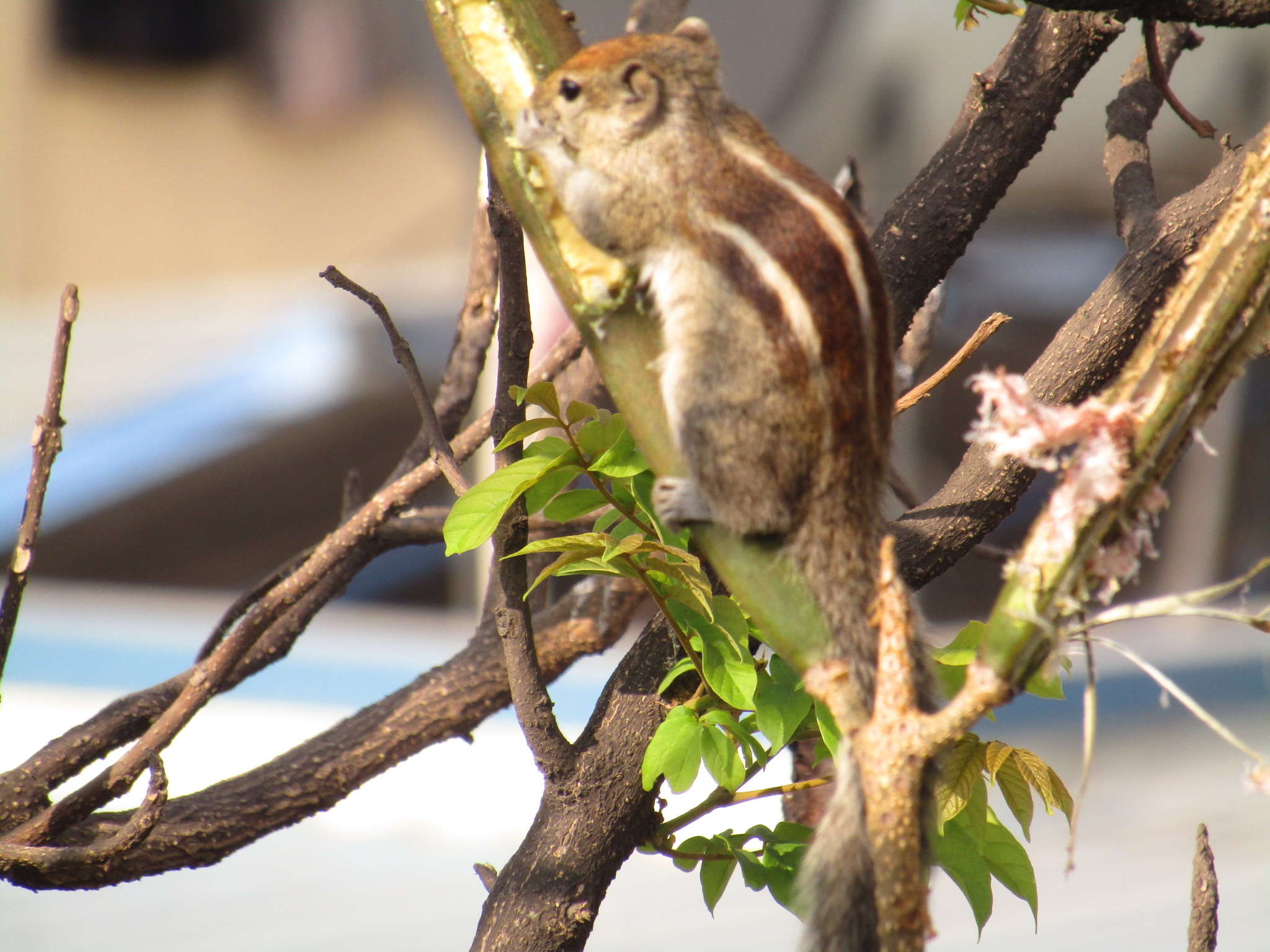
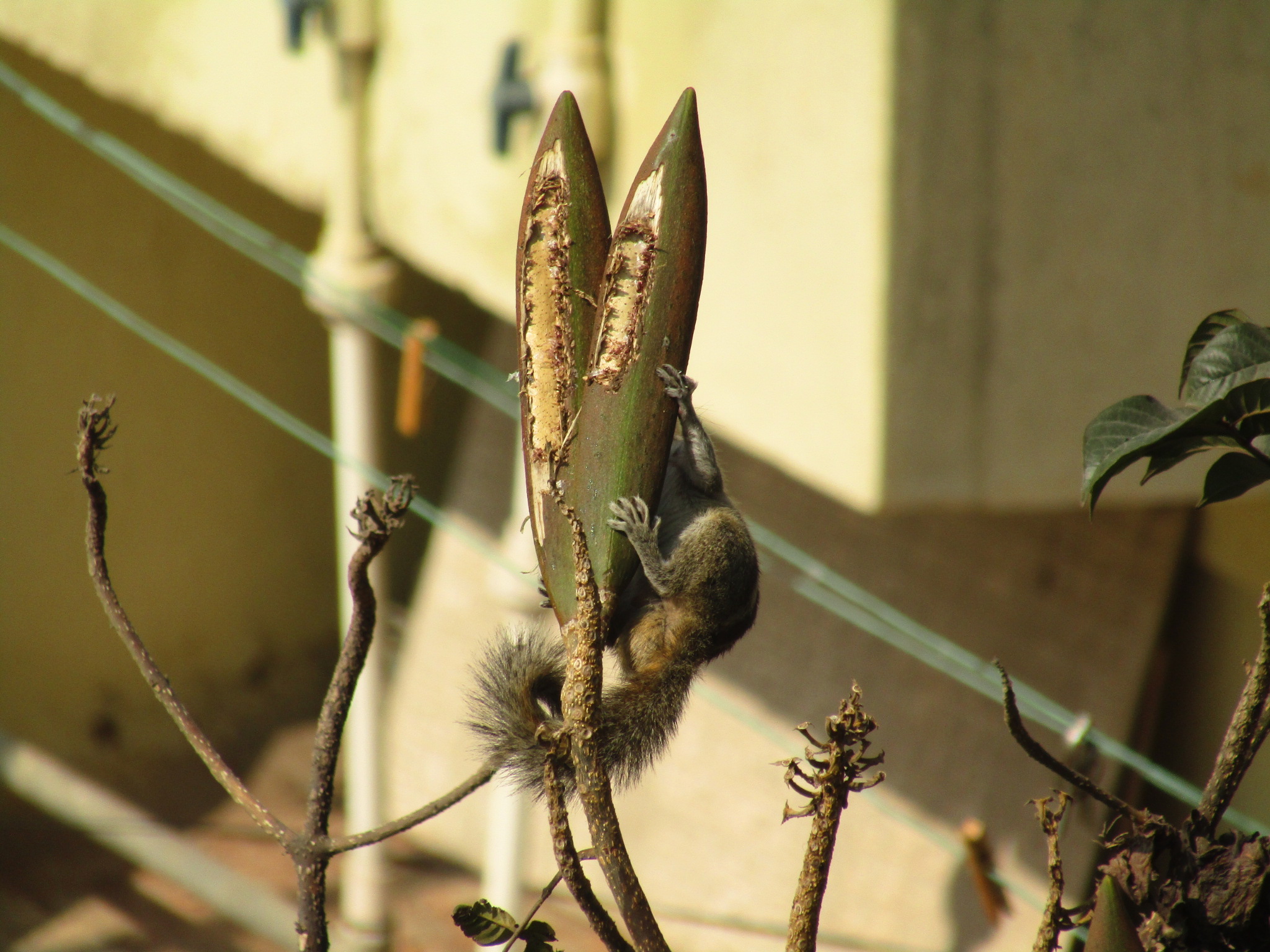
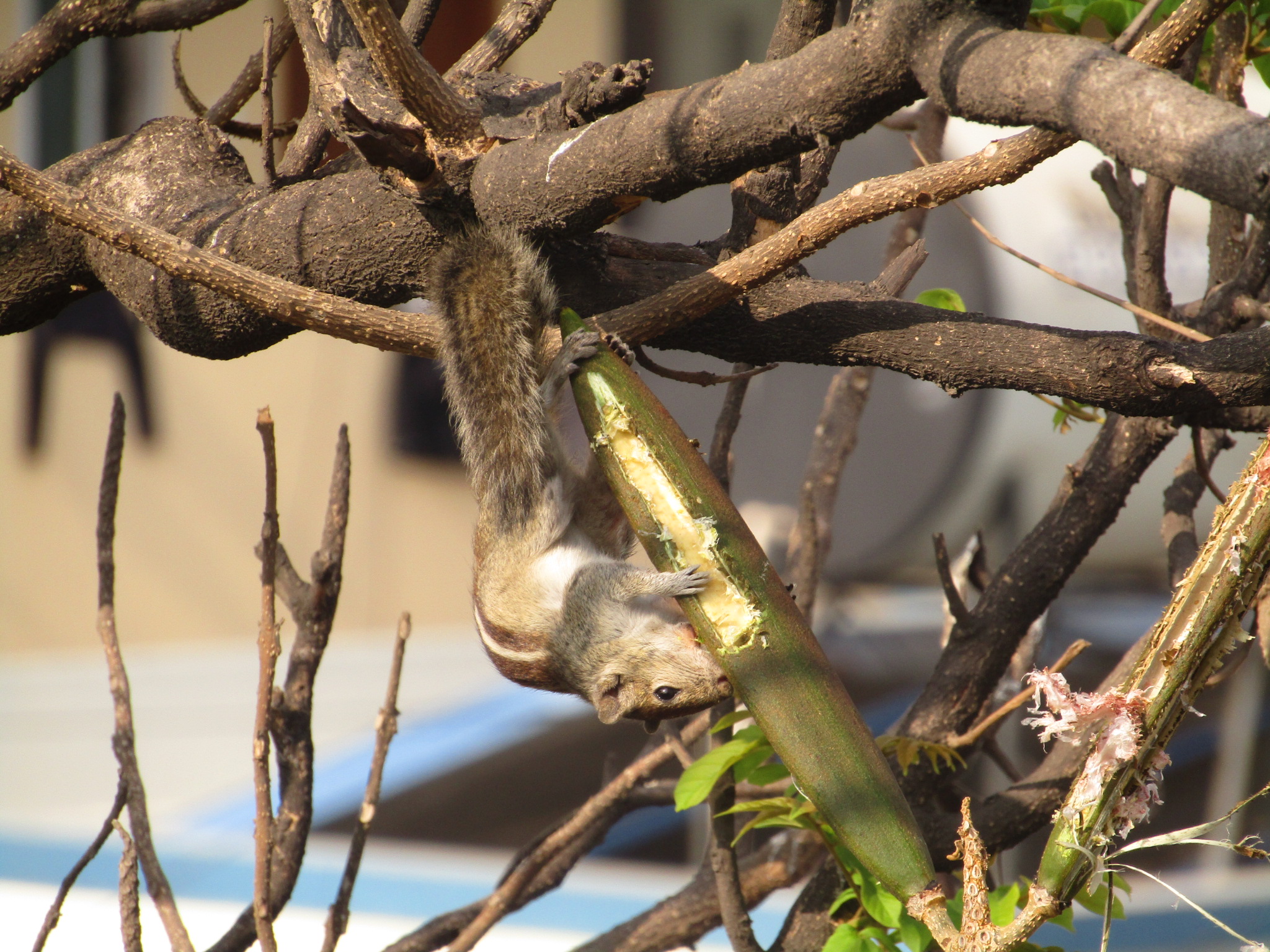
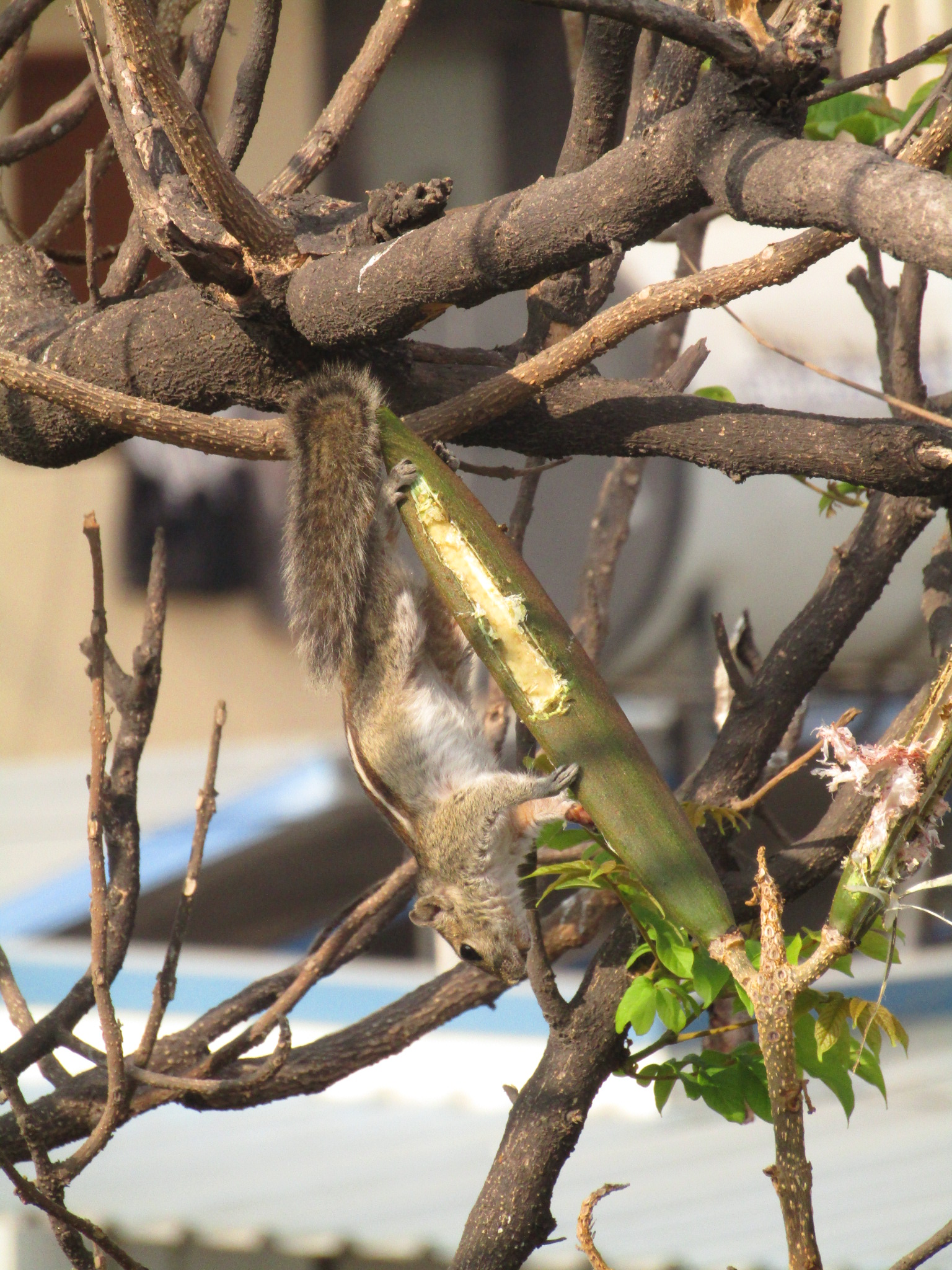
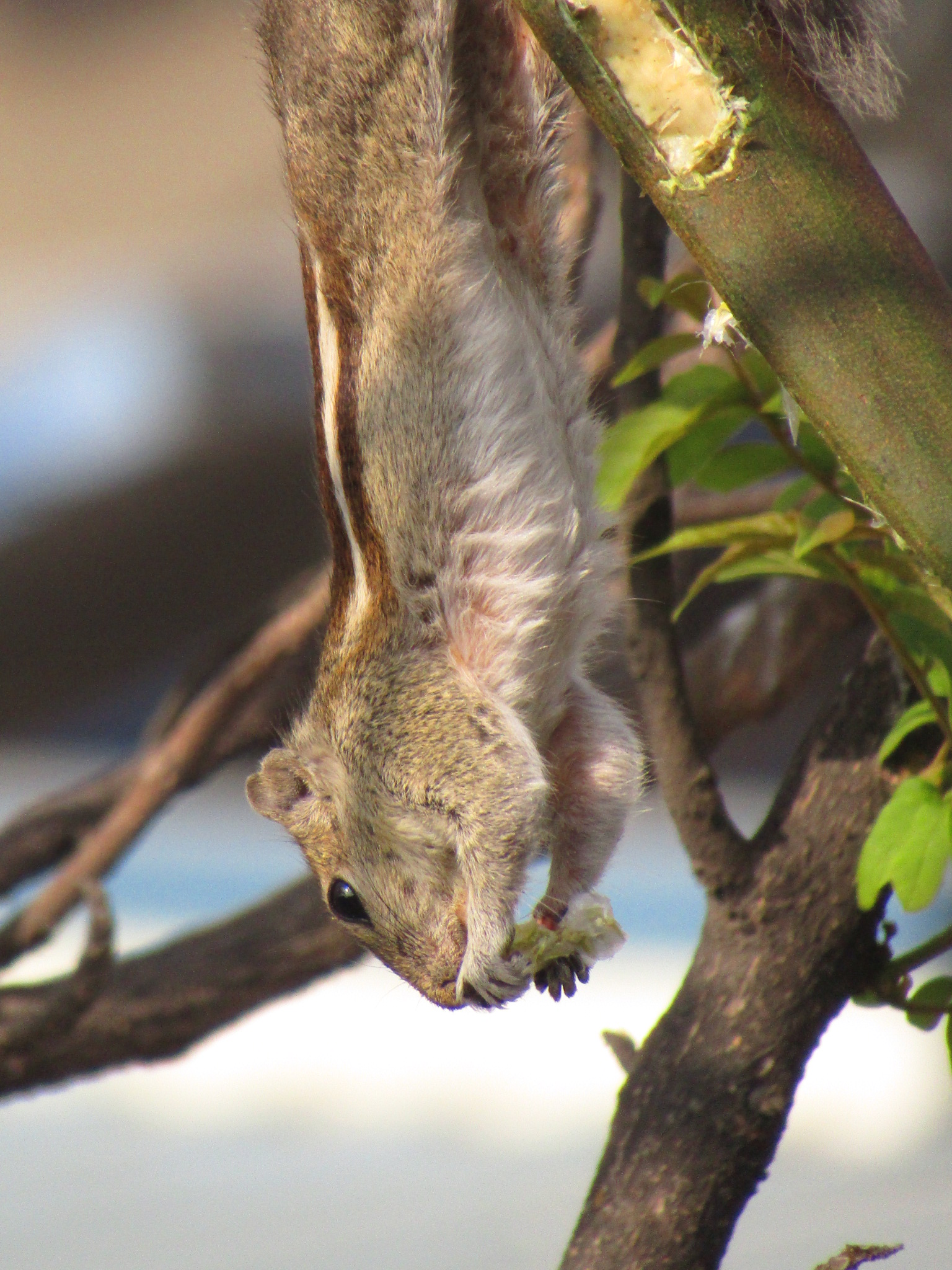
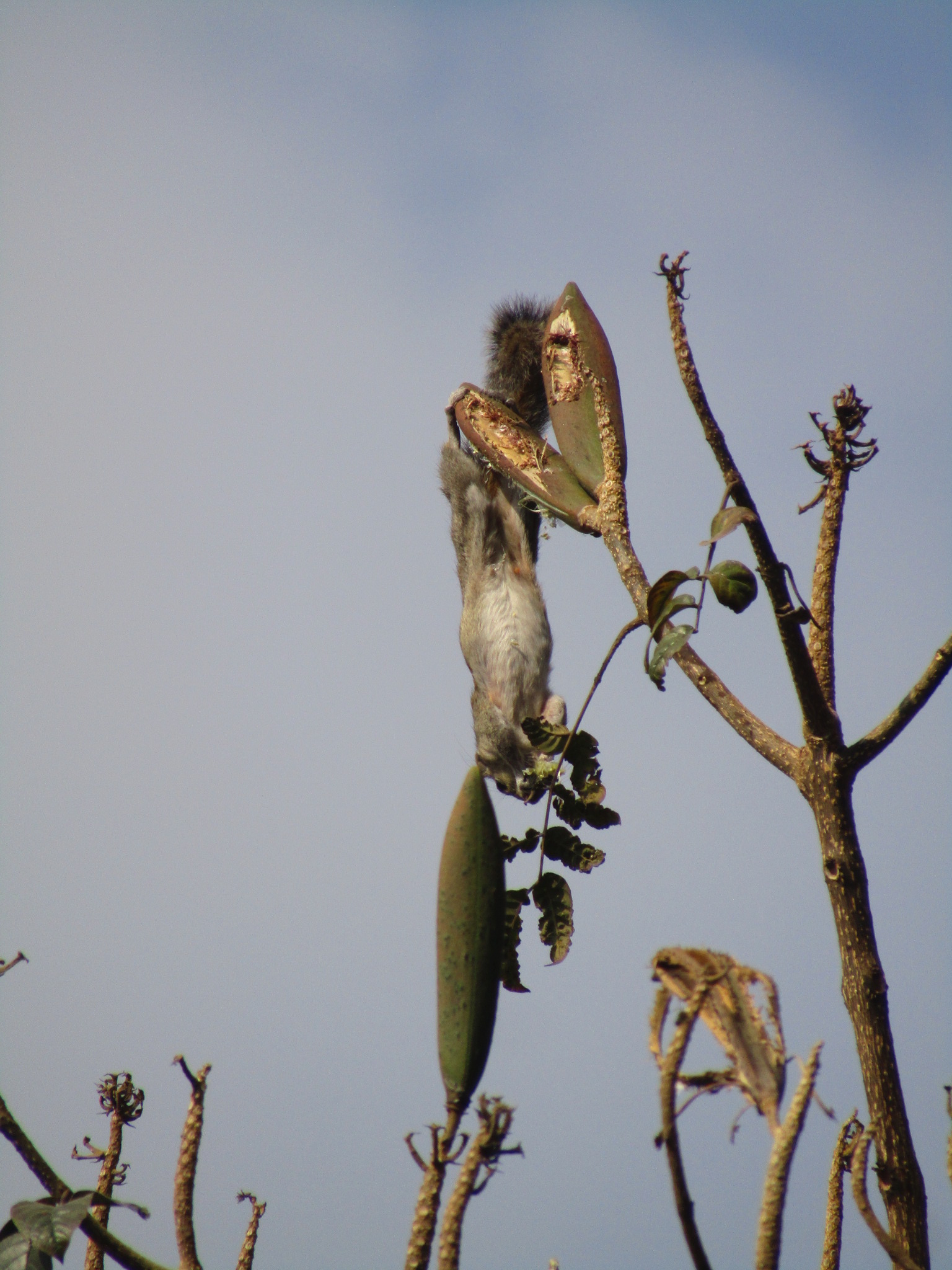
Squirrel with the African Tulip fruit
From my observations, I like to say that my African Tulip Tree is an open podium for all the songbirds, 24*7 an open restaurant for anyone who wants to snack on, and a sanctuary for anyone who wants to just be and relax.
All photos by Anu Paul.
About the author: Anu Paul works as a work as a designer. One of the major things that makes her feel alive is observing nature and having a conversation with the trees, flowers, and birds around me. She loves reading (especially regarding nature), sketching, weaving, learning new art and crafts, and finding people who love nature.





